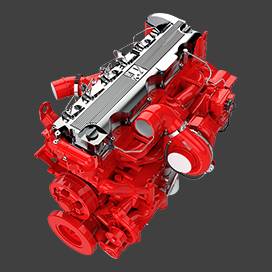Aug . 21, 2024 21:32 Back to list
Understanding the Causes and Effects of Warping in Brake Drums
Can Brake Drums Warp? Understanding the Mechanics and Impact
In the world of automotive engineering, brake drums are critical components that play a significant role in a vehicle's braking system. They operate under high stress and extreme conditions, making it essential to understand the behavior of these components, particularly regarding their propensity to warp. This article delves into the factors that contribute to brake drum warping, the signs to look out for, and the implications it has for vehicle safety and performance.
What Are Brake Drums?
Brake drums are cylindrical components in drum brake systems that work in tandem with brake shoes. When the brake pedal is applied, hydraulic pressure forces the shoes against the inner surface of the drum, creating friction that slows down or stops the vehicle. While drum brakes are less common in modern vehicles compared to disc brakes, they remain a staple in many older models and in certain applications like trucks and buses.
Can Brake Drums Warp?
Yes, brake drums can indeed warp over time, and this is often a concern for vehicle owners and technicians alike. Warping occurs when the brake drum becomes distorted, often due to excessive heat generated during braking. When the drums heat up, they can expand. If they cool down unevenly, it may result in a change in shape, leading to warping.
Causes of Warping
Several factors can contribute to the warping of brake drums
1. Overheating Frequent and heavy braking, especially in mountainous terrain or during towing, can cause the brake drums to overheat. Prolonged exposure to high temperatures can lead to thermal expansion and subsequent warping.
2. Poor Quality Materials Brake drums made from inferior materials may have a higher likelihood of warping. High-quality drums designed to withstand extreme conditions are less prone to such issues.
3. Improper Installation If the drums are not installed correctly, it can lead to uneven pressure during braking. This imbalance can result in warping over time.
can brake drums warp

5. Infrequent Maintenance Neglecting regular vehicle maintenance can contribute to various brake issues, including warping. Dirt and debris can accumulate in the brake system, affecting performance and increasing heat generation.
Signs of Warped Brake Drums
Detecting warped brake drums early can prevent major safety concerns
- Vibration One of the most common signs of warped drums is a noticeable vibration in the brake pedal or steering wheel when braking.
- Pulling to One Side If the vehicle pulls to one side while braking, it may indicate uneven wear or warping in one of the drums.
- Increased Stopping Distance Warped drums can lead to decreased braking efficiency, leading to longer stopping distances.
- Noisy Braking Grinding or squeaking noises when the brakes are applied can also suggest issues with the brake drum or associated components.
Implications of Warping
Driving with warped brake drums poses significant risks. Compromised braking performance can lead to accidents, especially in emergency situations. Furthermore, it can cause further damage to the braking system, resulting in costly repairs.
Conclusion
While brake drums are vital for maintaining vehicle safety, their susceptibility to warping under certain conditions cannot be ignored. Regular maintenance, including inspections and timely replacements of worn parts, is crucial to ensure the efficient operation of the braking system. Understanding the risks and signs of brake drum warping can help vehicle owners take proactive measures, enhancing both safety and performance on the road.
-
ROR Web Development: Build Fast, Scalable, Secure Apps
NewsAug.17,2025
-
Scania Brake Drums: OEM Quality for Optimal Safety & Durability
NewsAug.16,2025
-
R.V.I: Advanced Remote Visual Inspection for Precision
NewsAug.15,2025
-
Discover HYUNDA: Innovative Vehicles, Equipment & Solutions
NewsAug.14,2025
-
R.V.I: Unlock Advanced Insights & Real-time Performance
NewsAug.13,2025
-
Kamaz Brake Drum: Durable & Reliable for Heavy Duty Trucks
NewsAug.12,2025
